Fichas de peces marinos y de arrecife
Los peces marinos y de arrecife del acuario tienen colores brillantes y un gran atractivo visual. Algunas especies miden menos de 3 cm pero otras superan los 50 cm : ¡cada una tiene su propio volumen de acuario ! Véase también la lista de micropeces para nanoacuarios.
Cada especie de pez marino apta para el acuario marino, como el pez cirujano o el pez payaso, se describe con instrucciones de mantenimiento.
Página 1 de 692 especies de peces marinos y de arrecife con 60 fichas. Hay 14 géneros diferentes desde Ablabys hasta Amblyeleotris.
Lista des fichas de Ablabys binotatus a Amblyeleotris diagonalis
- Ablabys binotatus

12,0 → 15,0 cm (> 300 L)
pH 8,0–8,5 | GH | 23–28°C - Ablabys taenianotus

12,0 → 15,0 cm (> 300 L)
pH 8,0–8,5 | GH | 23–28°C - Abudefduf saxatilis

15,0 → 23,0 cm (> 1500 L)
pH 8,0–8,5 | GH | 15–28°C - Abudefduf sexfasciatus

14,0 → 19,0 cm (> 1500 L)
pH 8,0–8,5 | GH | 22–28°C - Abudefduf vaigiensis

14,0 → 20,0 cm (> 800 L)
pH 8,0–8,5 | GH | 22–28°C - Acanthostracion polygonium

20,0 → 50,0 cm (> 1500 L)
pH 8,0–8,5 | GH | 20–28°C
- Acanthurus achilles
 Pez cirujano de Aquiles
Pez cirujano de Aquiles
20,0 → 25,0 cm (> 450 L)
pH 8,0–8,5 | GH | 23–28°C - Acanthurus albimento

20,0 → 26,0 cm (> 800 L)
pH 8,0–8,5 | GH | 23–28°C - Acanthurus albipectoralis

28,0 → 33,0 cm (> 800 L)
pH 8,0–8,5 | GH | 23–28°C - Acanthurus auranticavus

35,0 → 45,0 cm (> 1500 L)
pH 8,0–8,5 | GH | 23–28°C - Acanthurus bahianus

22,0 → 25,0 cm (> 800 L)
pH 8,0–8,5 | GH | 23–28°C - Acanthurus bariene

48,0 → 52,0 cm (> 1500 L)
pH 8,0–8,5 | GH | 23–28°C - Acanthurus blochii

43,0 → 47,0 cm (> 1500 L)
pH 8,0–8,5 | GH | 23–28°C - Acanthurus chirurgus

25,0 → 35,0 cm (> 800 L)
pH 8,0–8,5 | GH | 23–28°C - Acanthurus chronixis

25,0 → 28,0 cm (> 450 L)
pH 8,0–8,5 | GH | 23–28°C - Acanthurus coeruleus
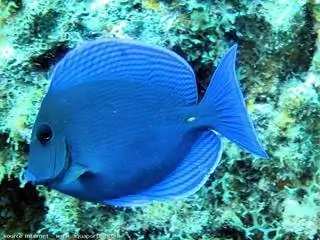
25,0 → 40,0 cm (> 800 L)
pH 8,0–8,5 | GH | 23–28°C - Acanthurus dussumieri

35,0 → 54,0 cm (> 1500 L)
pH 8,0–8,5 | GH | 23–28°C - Acanthurus fowleri

43,0 → 47,0 cm (> 1500 L)
pH 8,0–8,5 | GH | 23–28°C - Acanthurus gahhm

25,0 → 40,0 cm (> 800 L)
pH 8,0–8,5 | GH | 23–28°C - Acanthurus grammoptilus

20,0 → 25,0 cm (> 450 L)
pH 8,0–8,5 | GH | 23–28°C - Acanthurus guttatus

24,0 → 28,0 cm (> 450 L)
pH 8,0–8,5 | GH | 23–28°C - Acanthurus japonicus

19,0 → 23,0 cm (> 450 L)
pH 8,0–8,5 | GH | 23–28°C - Acanthurus leucocheilus

40,0 → 45,0 cm (> 1500 L)
pH 8,0–8,5 | GH | 23–28°C - Acanthurus leucopareius

22,0 → 24,0 cm (> 450 L)
pH | GH | 23–28°C
- Acanthurus leucosternon

20,0 → 25,0 cm (> 450 L)
pH 8,0–8,5 | GH | 23–28°C - Acanthurus lineatus

36,0 → 40,0 cm (> 800 L)
pH 8,0–8,5 | GH | 23–29°C - Acanthurus maculiceps

30,0 → 40,0 cm (> 800 L)
pH 8,0–8,5 | GH | 23–28°C - Acanthurus mata

40,0 → 50,0 cm (> 1500 L)
pH 8,0–8,5 | GH | 23–28°C - Acanthurus monroviae

26,0 → 40,0 cm (> 800 L)
pH 8,0–8,5 | GH | 21–26°C - Acanthurus nigricans

18,0 → 22,0 cm (> 300 L)
pH 8,0–8,5 | GH | 23–28°C - Acanthurus nigricauda

35,0 → 40,0 cm (> 800 L)
pH 8,0–8,5 | GH | 23–28°C - Acanthurus nigrofuscus

15,0 → 20,0 cm (> 300 L)
pH 8,0–8,5 | GH | 23–28°C - Acanthurus nigroris

22,0 → 24,0 cm (> 300 L)
pH 8,0–8,5 | GH | 23–28°C - Acanthurus nubilus

23,0 → 28,0 cm (> 450 L)
pH 8,0–8,5 | GH | 23–28°C - Acanthurus olivaceus

28,0 → 35,0 cm (> 800 L)
pH 8,0–8,5 | GH | 23–28°C - Acanthurus polyzona

16,0 → 20,0 cm (> 300 L)
pH 8,0–8,5 | GH | 23–28°C - Acanthurus pyroferus
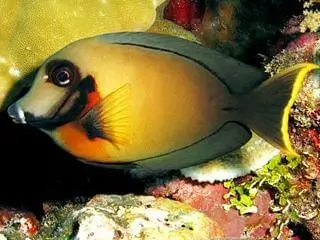
18,0 → 25,0 cm (> 300 L)
pH 8,0–8,5 | GH | 23–28°C - Acanthurus randalli

17,0 → 19,0 cm (> 300 L)
pH 8,0–8,5 | GH | 23–28°C - Acanthurus reversus
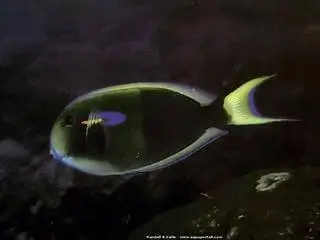
18,0 → 22,0 cm (> 300 L)
pH 8,0–8,5 | GH | 23–28°C - Acanthurus sohal
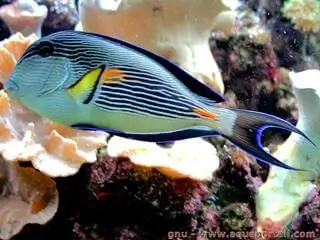 Pez cirujano cebra
Pez cirujano cebra
30,0 → 40,0 cm (> 800 L)
pH 8,0–8,5 | GH | 23–28°C - Acanthurus tennentii

25,0 → 31,0 cm (> 450 L)
pH 8,0–8,5 | GH | 23–28°C - Acanthurus thompsoni

24,0 → 27,0 cm (> 450 L)
pH 8,0–8,5 | GH | 23–28°C - Acanthurus tractus

20,0 → 30,0 cm (> 450 L)
pH 8,0–8,5 | GH | 23–28°C - Acanthurus triostegus

20,0 → 27,0 cm (> 450 L)
pH 8,0–8,5 | GH | 23–28°C - Acanthurus tristis

22,0 → 25,0 cm (> 300 L)
pH 8,0–8,5 | GH | 23–28°C - Acanthurus xanthopterus

50,0 → 70,0 cm (> 1500 L)
pH 8,0–8,5 | GH | 23–28°C - Acreichthys tomentosus
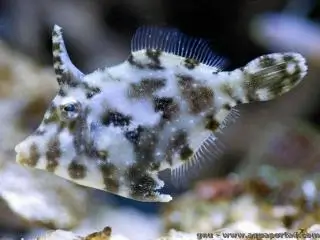
10,0 → 12,0 cm (> 300 L)
pH 8,0–8,5 | GH | 23–28°C - Aeoliscus punctulatus
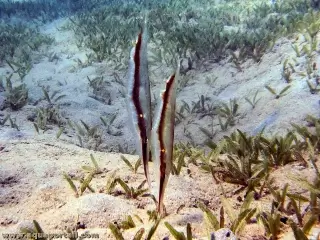
10,0 → 15,0 cm (> 450 L)
pH 8,0–8,5 | GH | 22–28°C - Aeoliscus strigatus

14,0 → 16,0 cm (> 800 L)
pH 8,0–8,5 | GH | 23–28°C - Aethaloperca rogaa
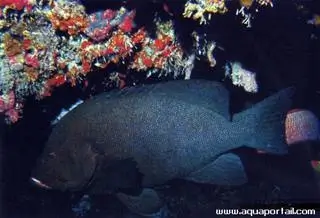
58,0 → 62,0 cm (> L)
pH 8,0–8,5 | GH | 23–28°C - Agonomalus proboscidalis
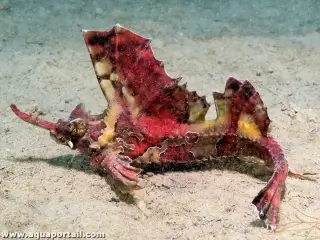
15,0 → 20,0 cm (> 300 L)
pH | GH | 8–14°C - Agonus cataphractus
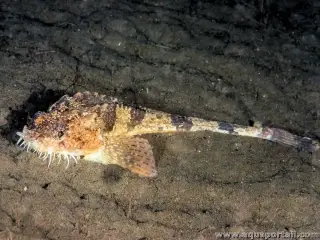
14,0 → 21,0 cm (> 300 L)
pH | GH | 4–12°C - Aidablennius sphynx

6,5 → 8,0 cm (> 200 L)
pH | GH | 12–25°C - Albula vulpes
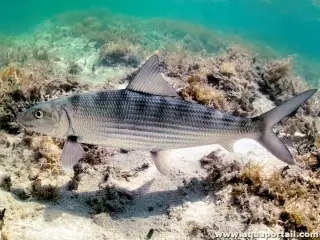 Macabijo, Macabí
Macabijo, Macabí
40,0 → 104,0 cm (> 6000 L)
pH | GH | 16–25°C - Alepisaurus ferox

150,0 → 215,0 cm (> 6000 L)
pH | GH | 0–0°C - Alosa fallax
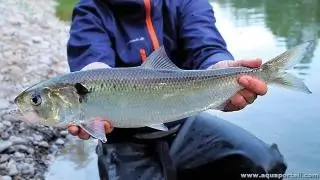
30,0 → 60,0 cm (> 6000 L)
pH 8,0–8,5 | GH | 5–26°C - Alosa pseudoharengus

15,0 → 40,0 cm (> 6000 L)
pH 8,0–8,5 | GH | 4–28°C - Alosa sapidissima

50,0 → 76,0 cm (> 6000 L)
pH 8,0–8,5 | GH | 5–25°C - Amblyeleotris aurora

9,0 → 11,0 cm (> 80 L)
pH 8,0–8,5 | GH | 23–28°C - Amblyeleotris diagonalis
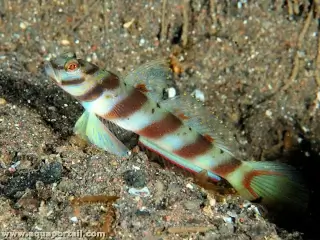
9,0 → 11,0 cm (> 120 L)
pH 8,0–8,5 | GH | 22–26°C
Los datos biológicos de las especies indican el tamaño en cm y, si los valores son relevantes, otras características específicas.

